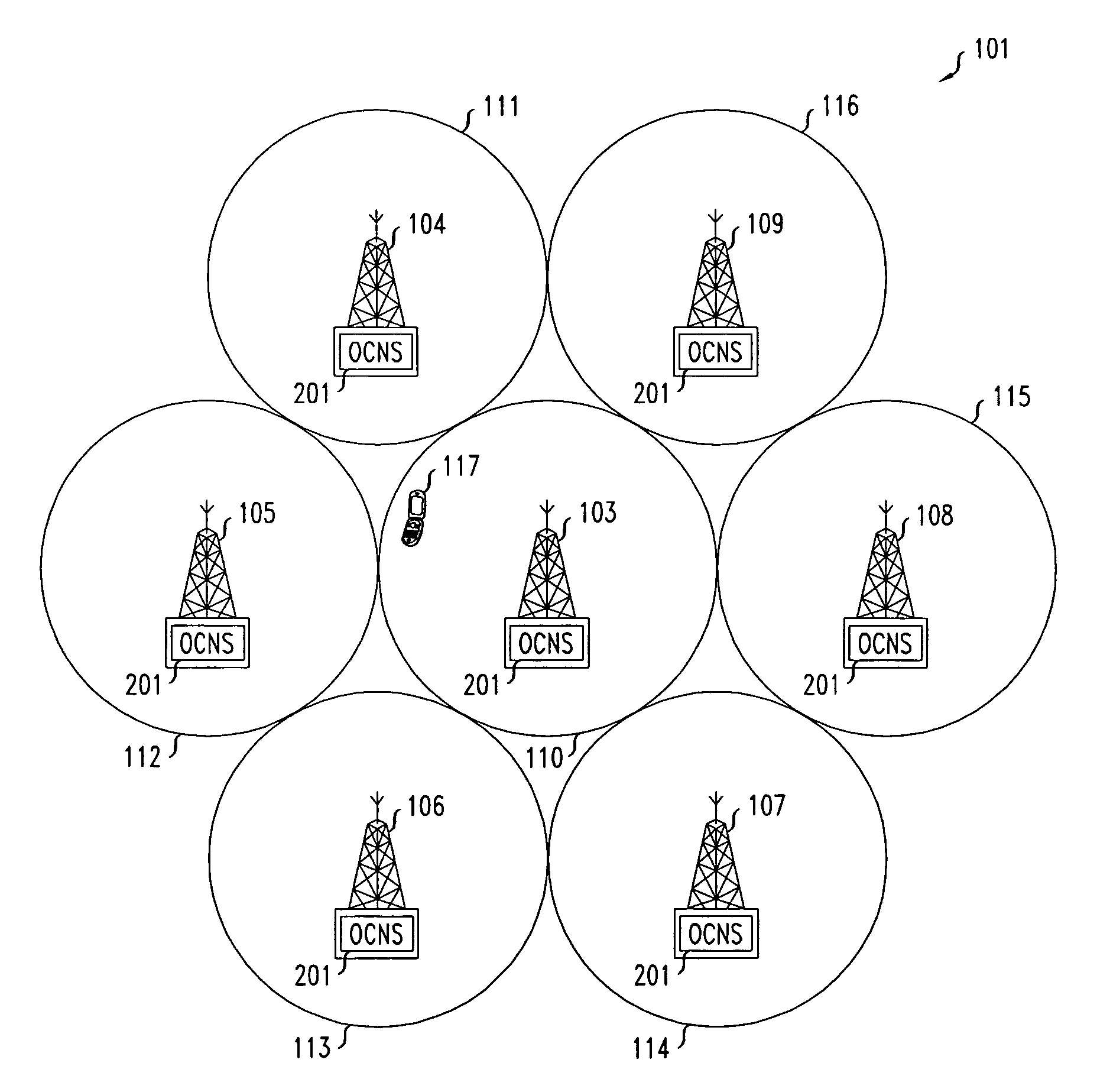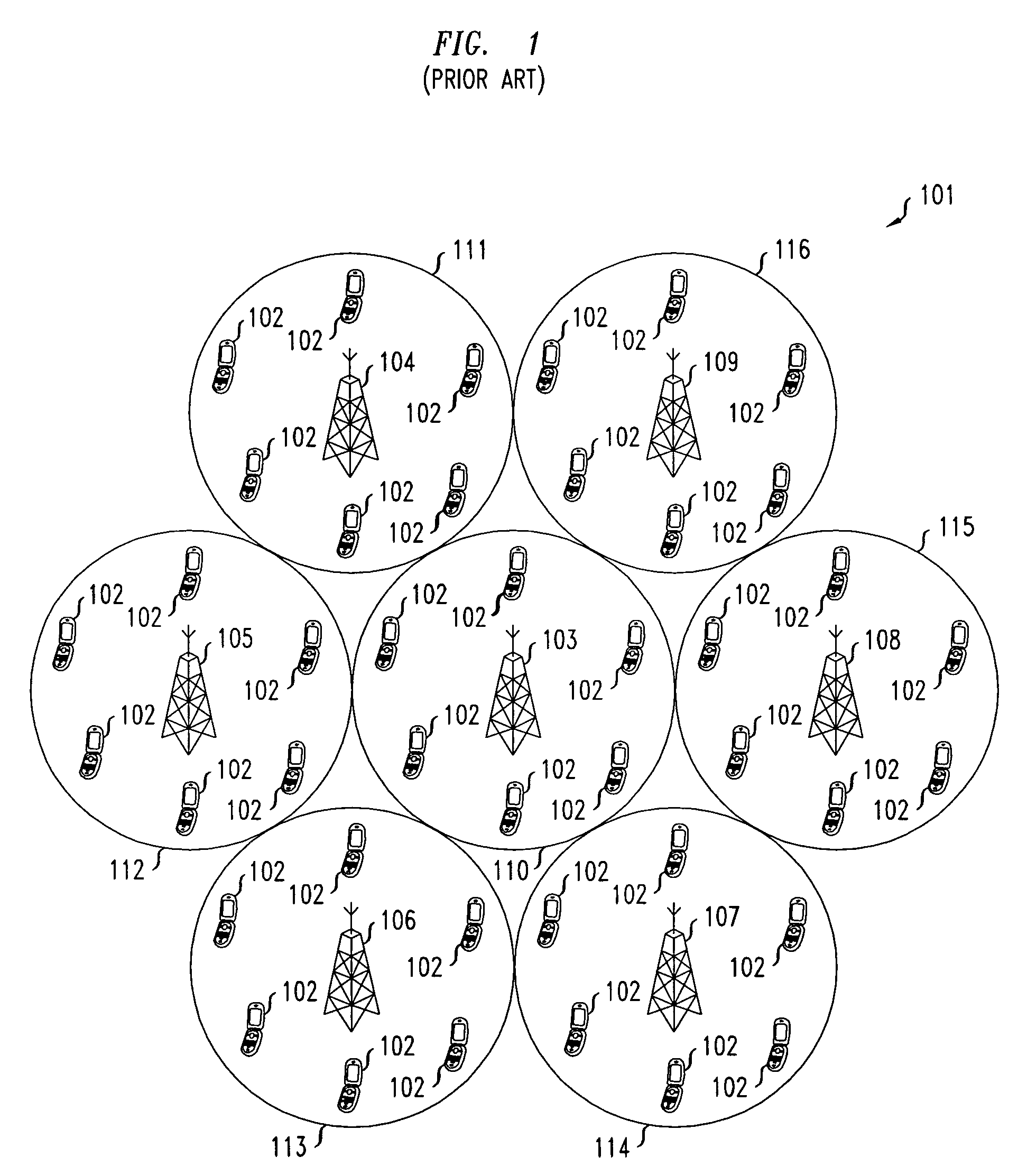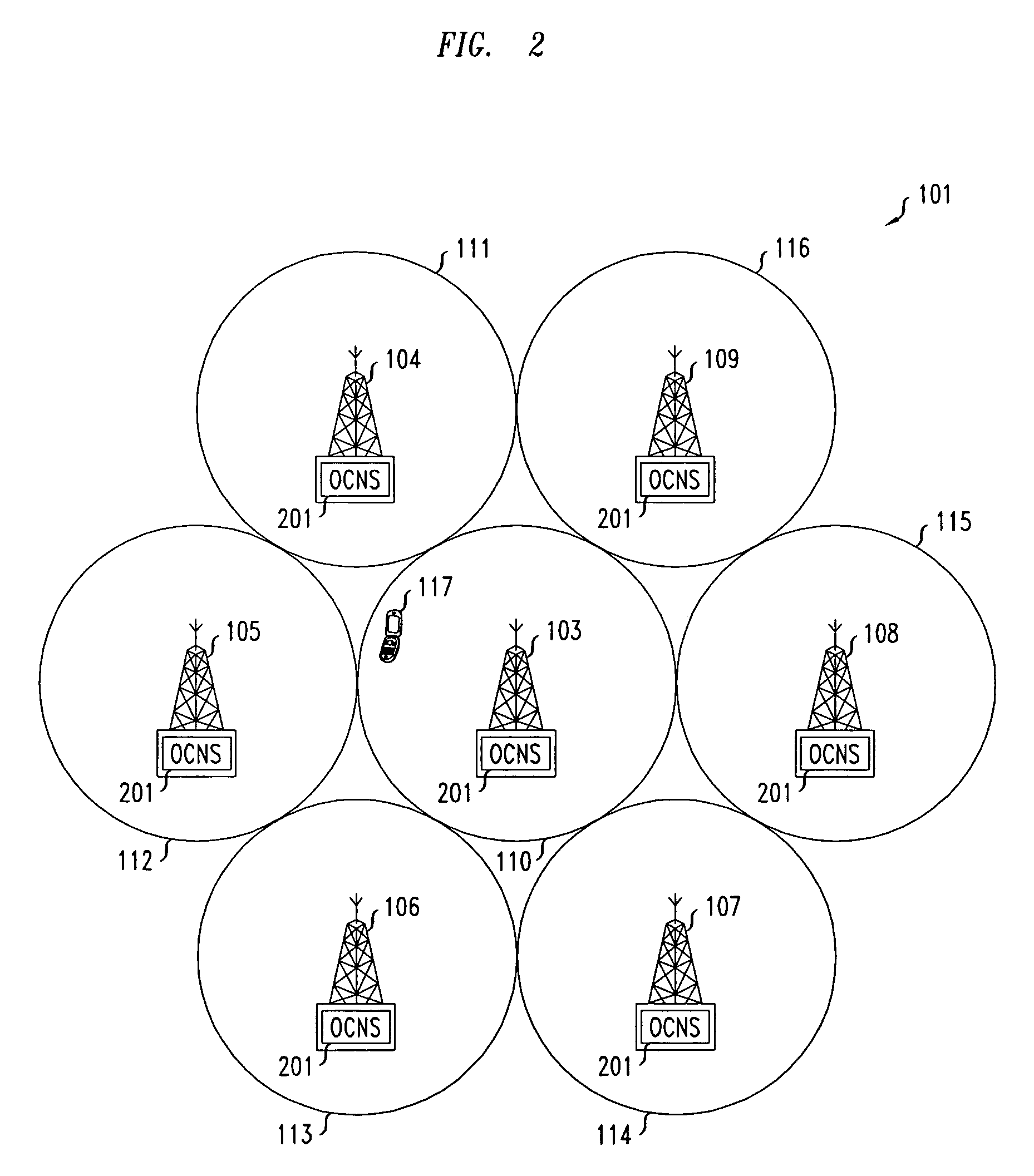Method for estimating the downlink capacity in a spread spectrum wireless communications system
a wireless communication and spread spectrum technology, applied in the field of wireless communication, can solve the problems of inability to accurately predict the capacity of air interfaces, inability to meet the requirements of the system,
- Summary
- Abstract
- Description
- Claims
- Application Information
AI Technical Summary
Benefits of technology
Problems solved by technology
Method used
Image
Examples
Embodiment Construction
[0012]In an embodiment of the present invention, a method of estimating capacity in a spread spectrum wireless communications system is effected via a single test mobile operating within a background of calibrated, broadcast co-channel interference using an OCNS, which generates, at the base station for each sector, downlink power as if it were supporting multiple live mobile terminals. Specifically, the OCNS output consists of multiple separate downlink power transmissions where each transmission simulates the downlink power transmitted to a live mobile terminal. The principle behind this methodology is described below.
[0013]The OCNS within each base station in a service area of interest broadcasts co-channel interference on a sector-by-sector basis. Accordingly, the co-channel interference broadcast on a sector-by-sector basis is calibrated, i.e., it is adjusted so that the interference emulates that which is broadcast to a collection of live mobiles. Within each sector's OCNS, mu...
PUM
 Login to View More
Login to View More Abstract
Description
Claims
Application Information
 Login to View More
Login to View More - R&D
- Intellectual Property
- Life Sciences
- Materials
- Tech Scout
- Unparalleled Data Quality
- Higher Quality Content
- 60% Fewer Hallucinations
Browse by: Latest US Patents, China's latest patents, Technical Efficacy Thesaurus, Application Domain, Technology Topic, Popular Technical Reports.
© 2025 PatSnap. All rights reserved.Legal|Privacy policy|Modern Slavery Act Transparency Statement|Sitemap|About US| Contact US: help@patsnap.com



